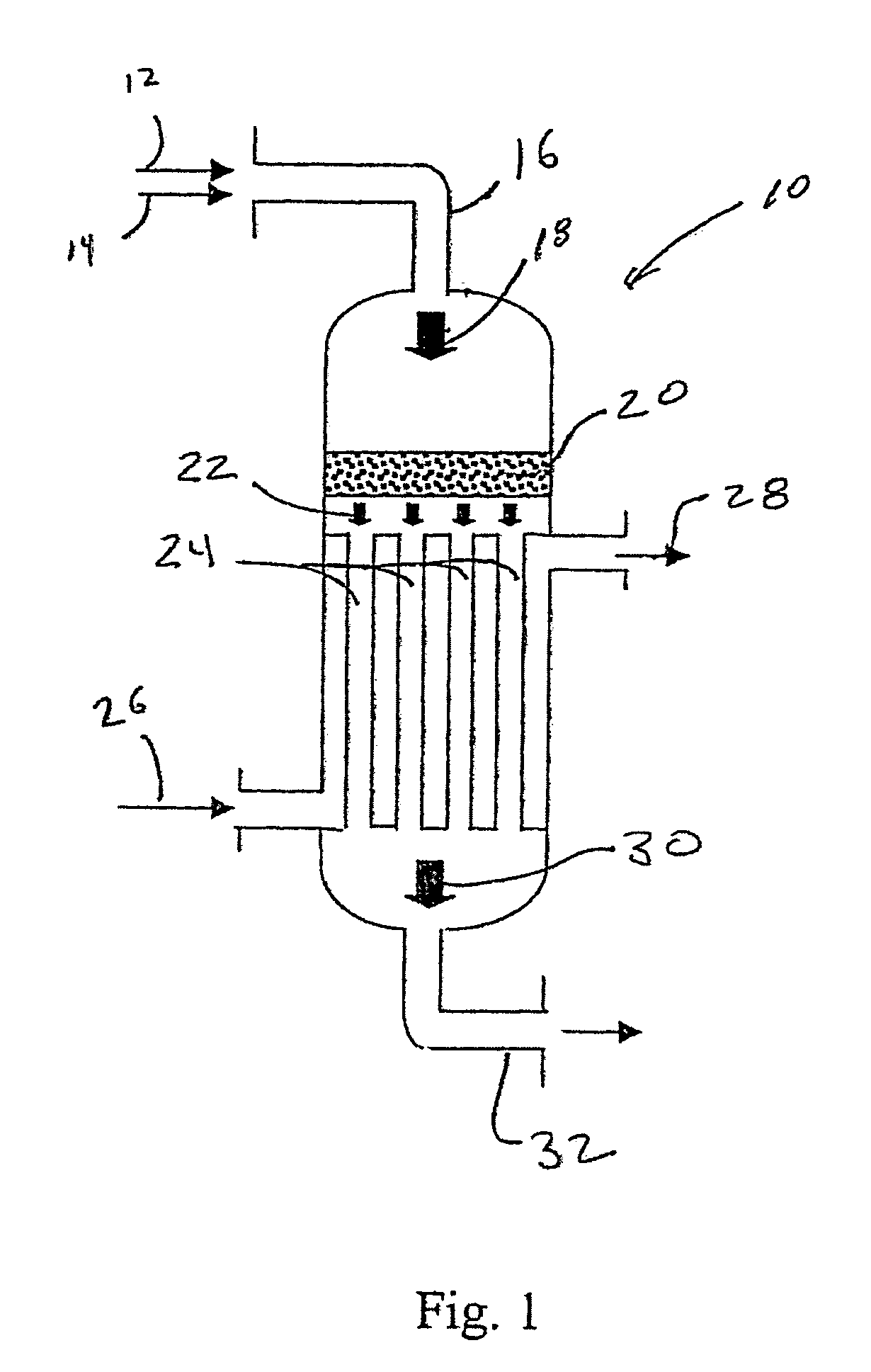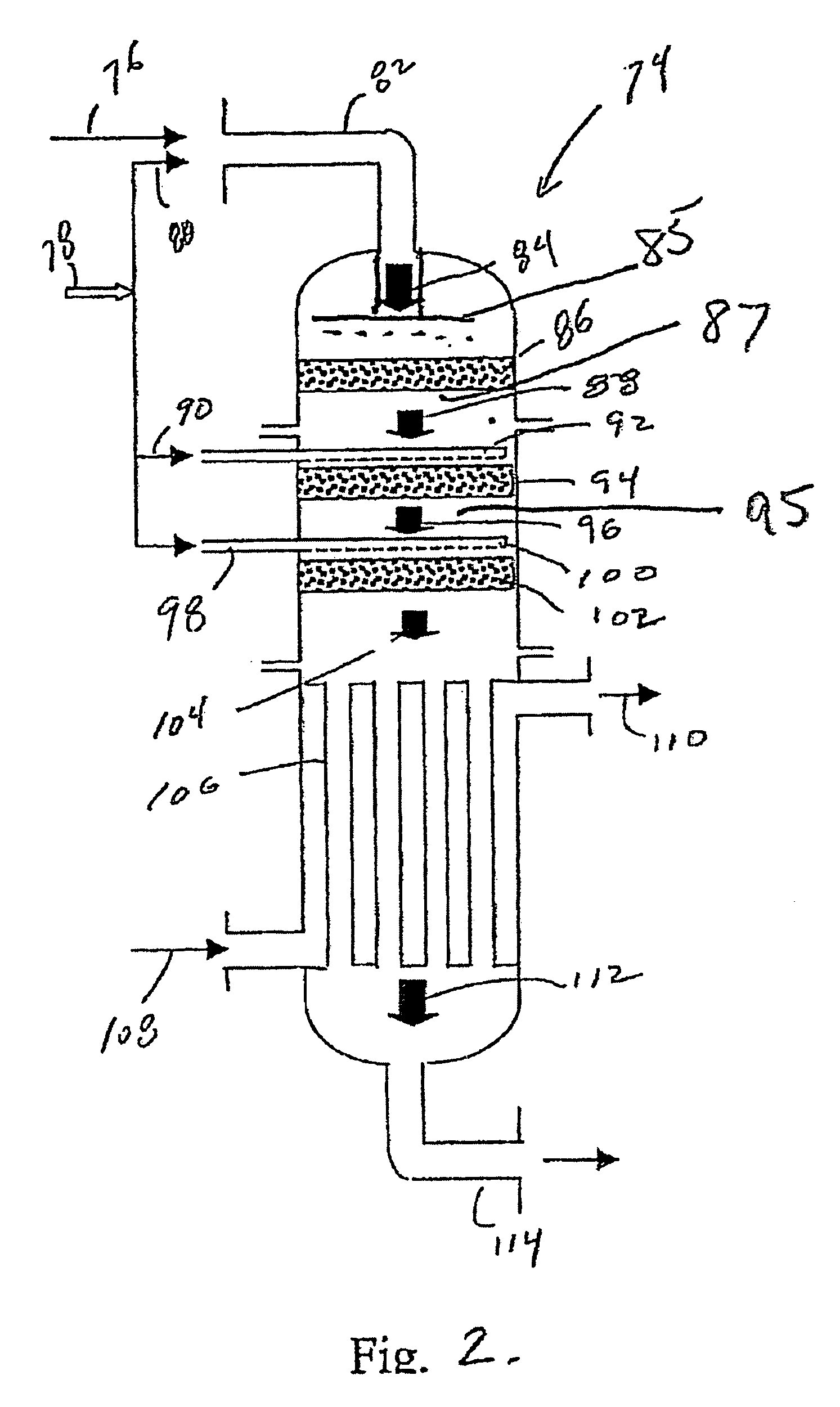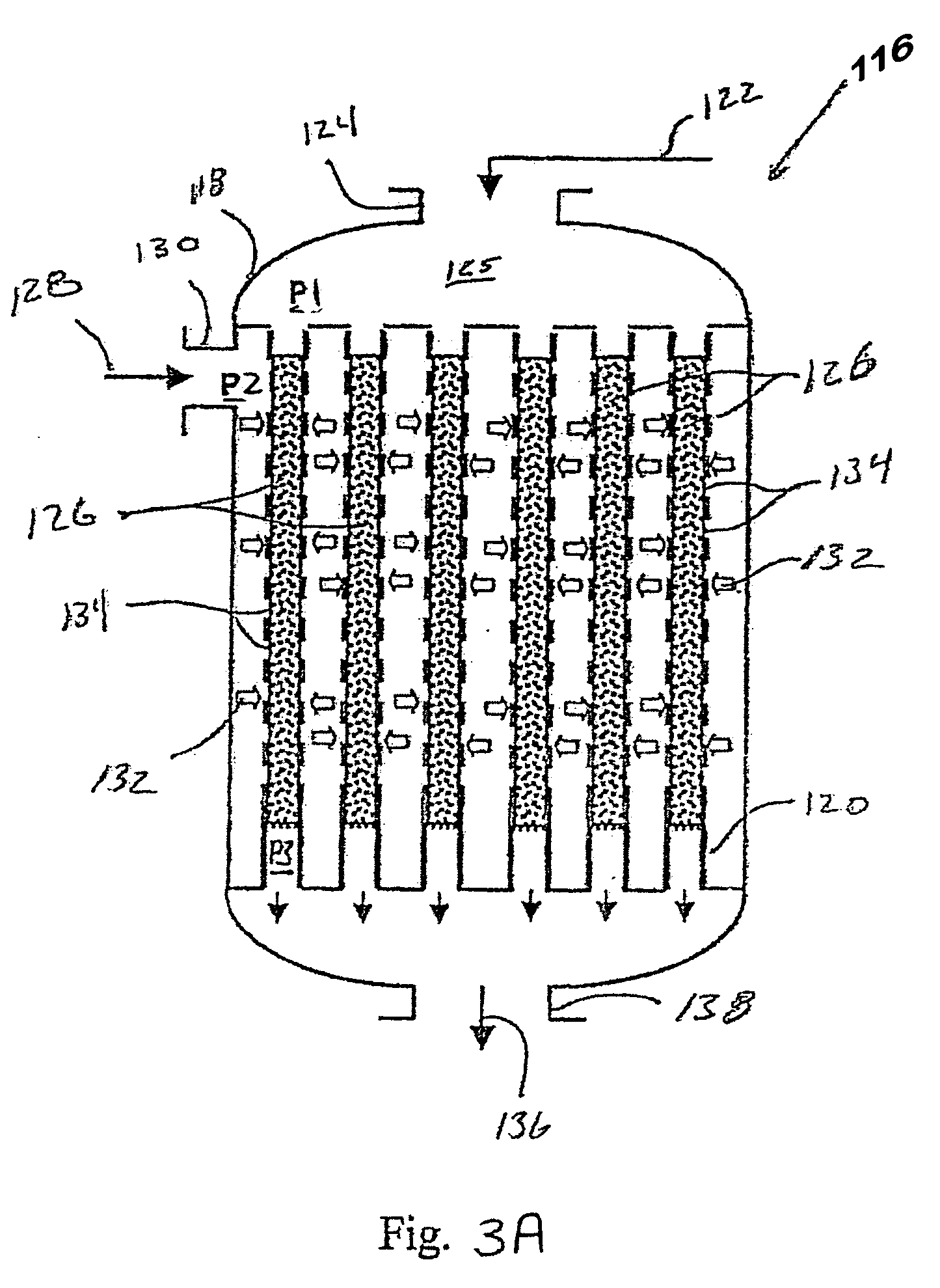Synthesis gas process comprising partial oxidation using controlled and optimized temperature profile
a technology of partial oxidation and temperature profile, which is applied in the direction of metal/metal-oxide/metal-hydroxide catalysts, physical/chemical process catalysts, bulk chemical production, etc., can solve the problem of large potential for explosion associated with mixing hydrocarbon and molecular oxygen, the ratio of hsub>2/, and the prediction of natural gas outliving oil reserves by a significant margin. , to achieve the effect of reducing the risk of explosion associated with
- Summary
- Abstract
- Description
- Claims
- Application Information
AI Technical Summary
Benefits of technology
Problems solved by technology
Method used
Image
Examples
examples
[0087] Simulation tests based on computer modeling were performed to estimate the performance of multiple-oxygen injections to a multi-bed catalytic partial oxidation reactor to find the optimum concentration of oxygen in each stage and the optimum ranges of temperature at the inlet of each bed. For these Examples, the numbers of stages are 1 (for comparison purposes), 2, 3, and 5. In all cases, the hydrocarbon gas is methane, and the oxygen-containing stream is substantially pure molecular oxygen. For single-bed Examples (Ex. 1,2) used for comparison, methane and O2 are premixed upstream of the sole catalyst bed to form a reactant gas stream with a molar ratio of carbon to molecular oxygen (C:O2) of approximately 1.8:1 or 2.49:1. For more than two-oxygen injections and multiple-bed reactors (Examples 3-16), methane and O2 are premixed upstream of the first catalyst bed (or first stage) to form a reactant gas stream with a molar ratio of carbon to molecular oxygen (C:O2) of about 3:...
PUM
| Property | Measurement | Unit |
|---|---|---|
| Temperature | aaaaa | aaaaa |
| Temperature | aaaaa | aaaaa |
| Temperature | aaaaa | aaaaa |
Abstract
Description
Claims
Application Information
 Login to View More
Login to View More - R&D
- Intellectual Property
- Life Sciences
- Materials
- Tech Scout
- Unparalleled Data Quality
- Higher Quality Content
- 60% Fewer Hallucinations
Browse by: Latest US Patents, China's latest patents, Technical Efficacy Thesaurus, Application Domain, Technology Topic, Popular Technical Reports.
© 2025 PatSnap. All rights reserved.Legal|Privacy policy|Modern Slavery Act Transparency Statement|Sitemap|About US| Contact US: help@patsnap.com



